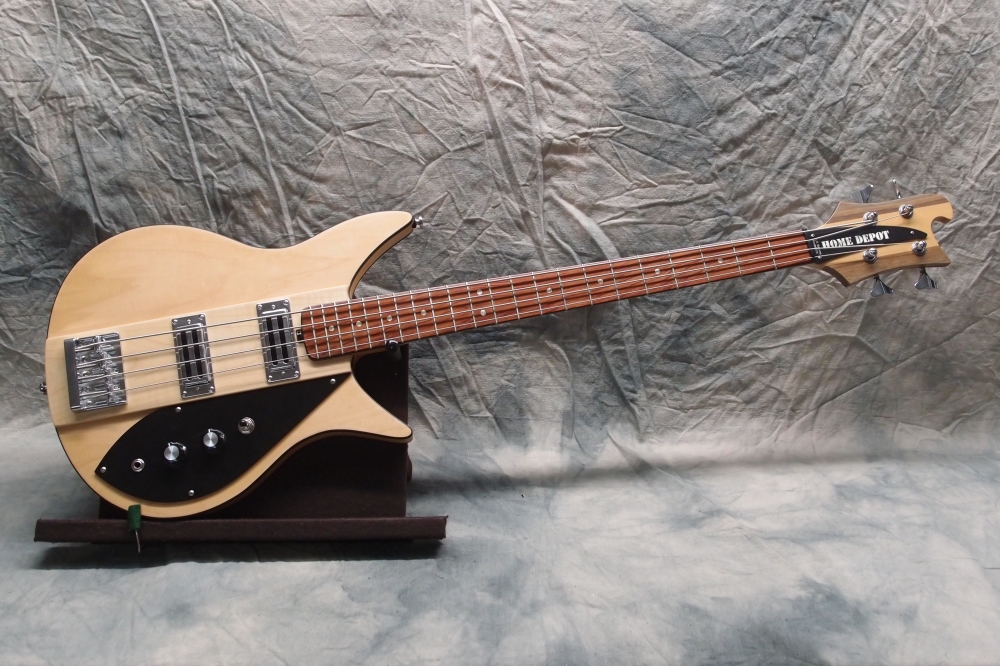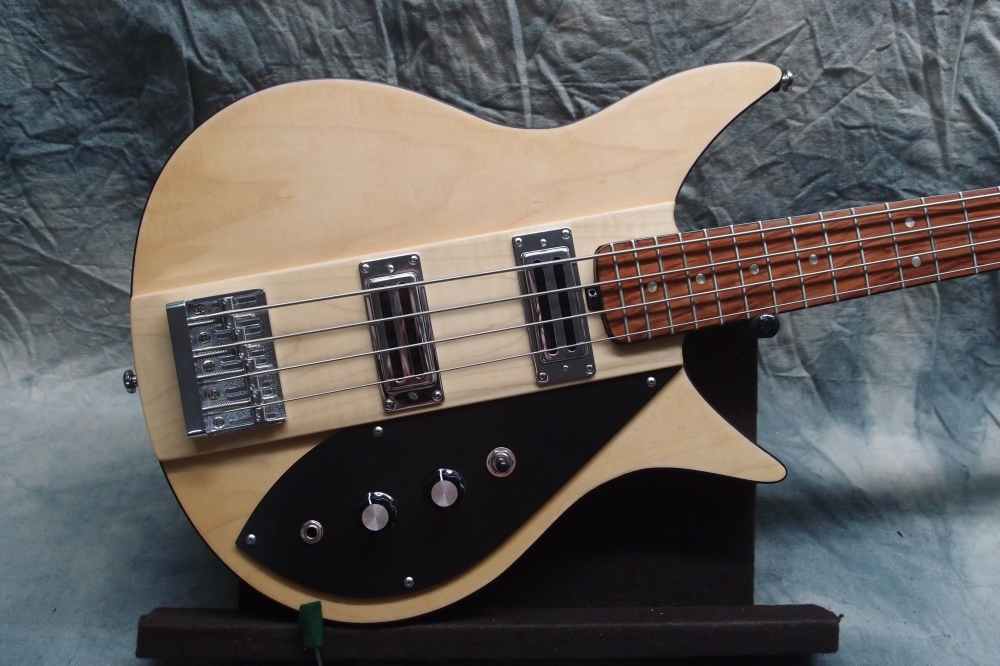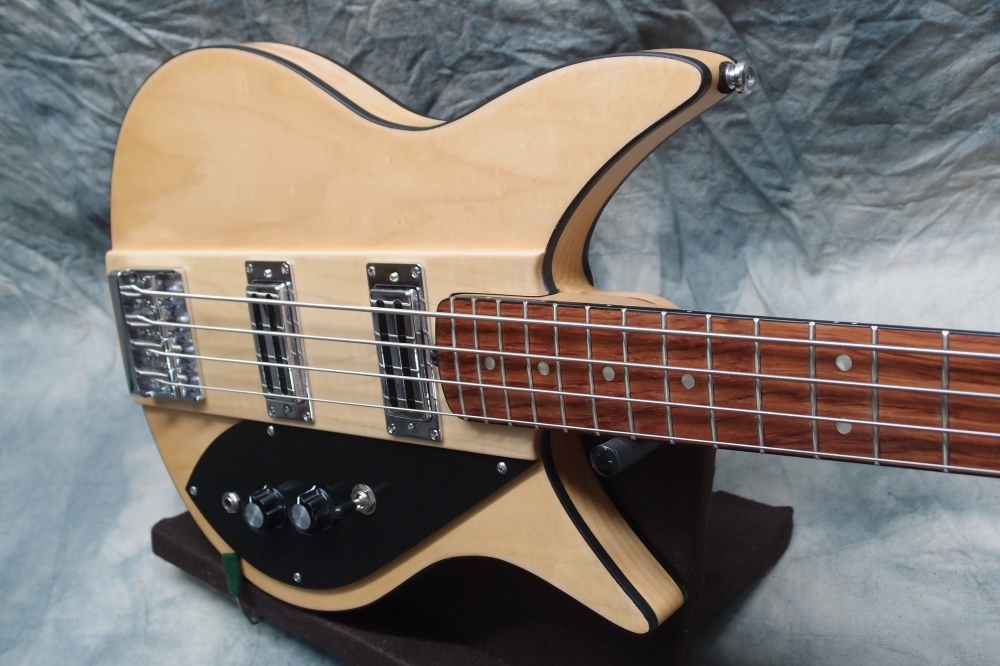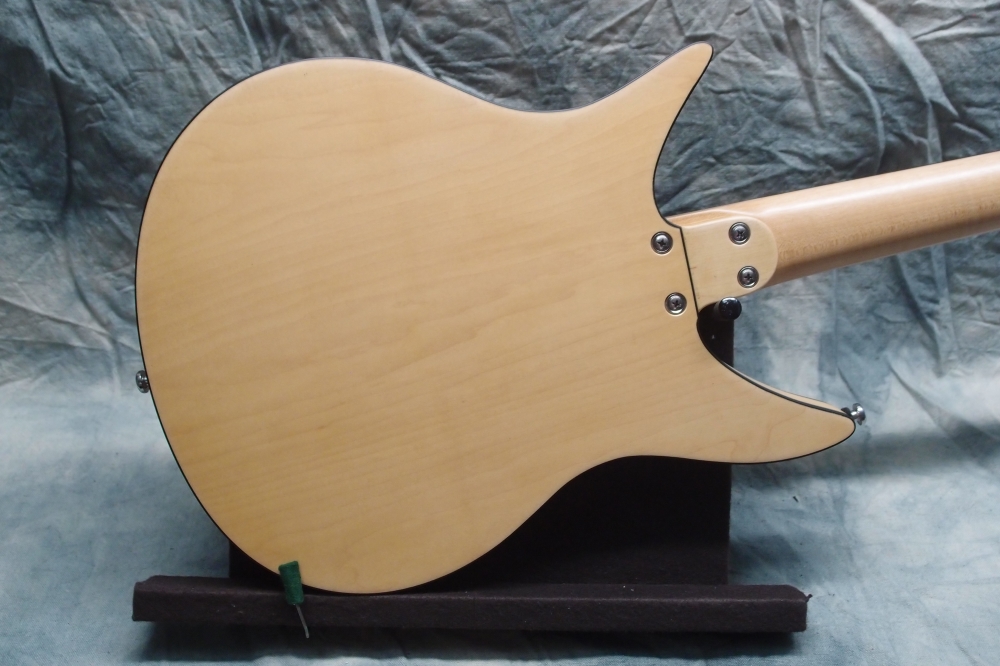Laboratory (1/2)
I added some notes on this subject, see page linked below. I keep seeing truly horrific advice being dispensed online by luthiées, when the correct solution is easy and free.
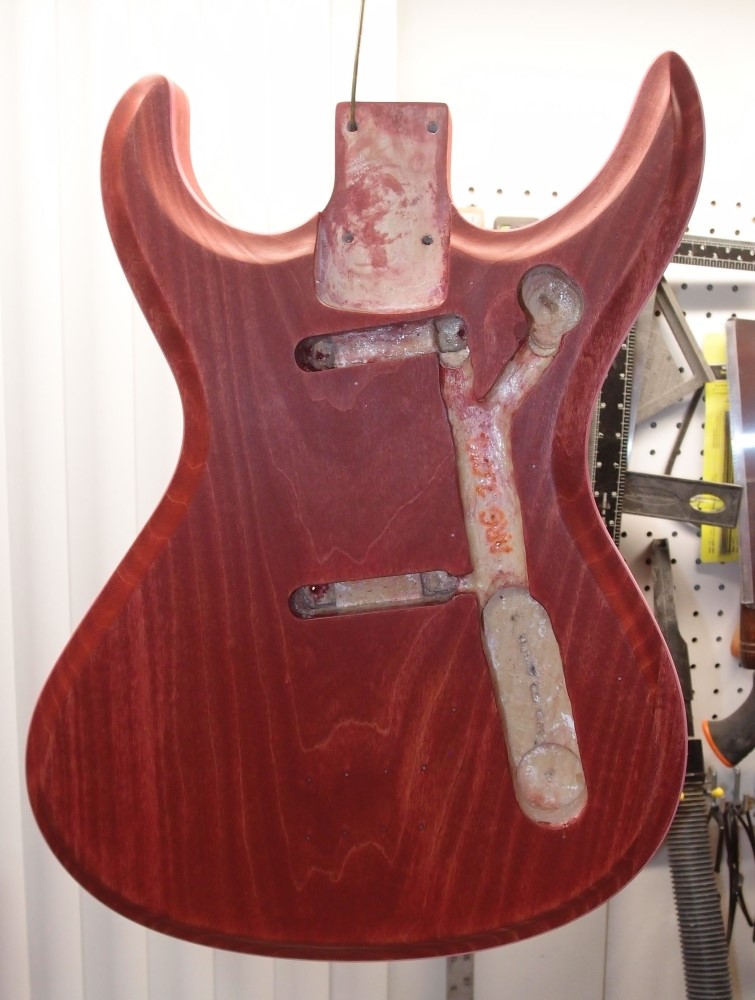
It's time to get back to work in the real world. Here is a Mosrite body, almost completely recovered from its brush with water-based polyurethane. Stick with oil-based, water-based is junk.
More: Enough Cyber-Luthiery ...

This is the latest Ric project. I tried to use a Gibson-style nut, but it just can't cope with the Rickenbacker geometry. If you make the string slots deep enough to keep the strings from jumping out sideways, you end up over-cutting them, even with the 1.5mm shim I already installed because I was expecting that.
More: Going Nutty ...
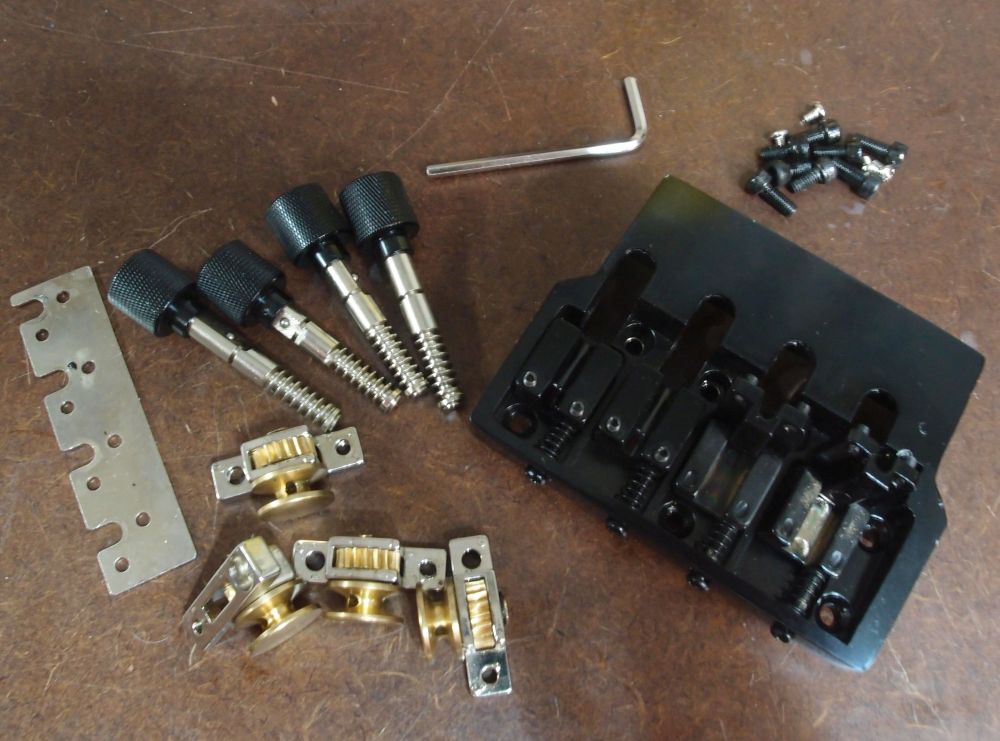
This is the headless bridge I got a while ago that proved to be cosmetically damaged. You can even see the damage in this picture. I filled in the dings with black CA, but I had no expectation of ever hiding it, so this bridge got thrown in the junk box after I got a refund, they didn't want it back.
More: Headless Brainstorm ...
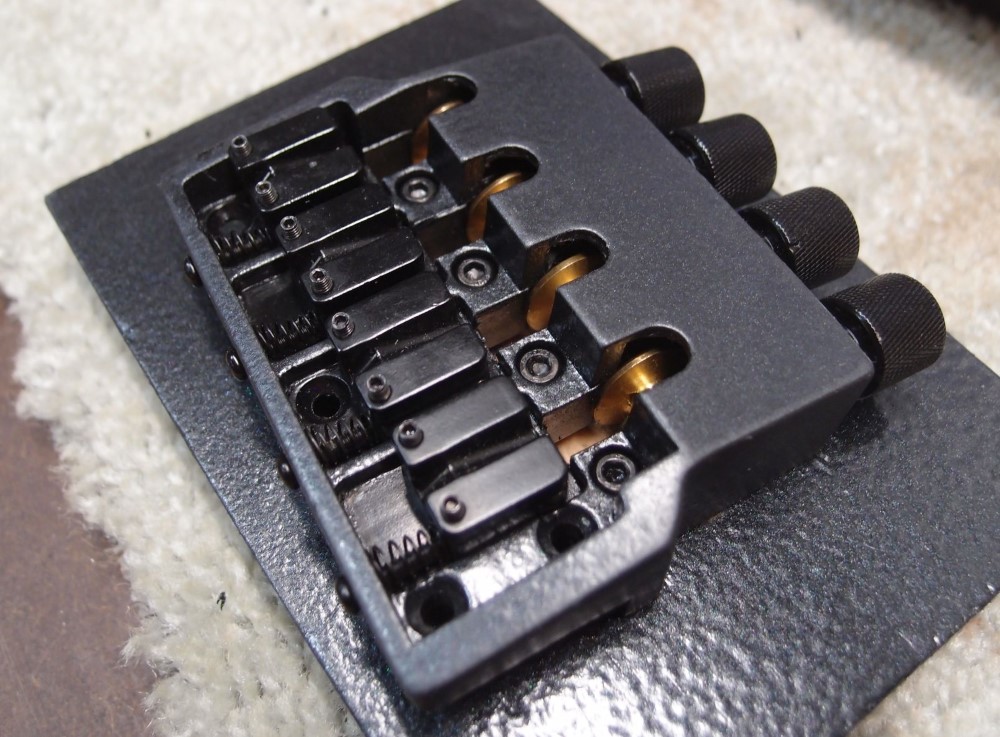
The new paint is dry enough to handle, so I re-assembled the headless bridge. It is sitting on top of the piece of scrap wood that I screwed it to while I was painting it. That gives you a good idea of what the hammered paint looks like if you lay it on thick enough. The bridge is smoother because I sanded between coats. I also rubbed some of the shine off it. By the time I get back around to this, the paint will be rock-hard. I had to do some careful scraping to get the saddles to fit back into the tracks.
More: Headless Bridge Re-dux ...

Most modern fret wire is made from what is called eighteen percent nickel-silver. The term denotes a common alloy used in many commercial and industrial applications where high corrosion resistance is required and excellent cold-working properties are necessary for fabrication.
More: Making Fret Wire ...

I've been thinking about what I want to do luthiery-wise from here on out, and I think that apart from the cool Radiata glue-ups, I am going to do mainly plywood-core Danelectro-style bodies with Tolex side bindings. I want to avoid bothersome complications like three-dimensional paint jobs. If it's not enjoyable, then why bother?
More: Plans ...
"RetroBrite" is a name for a process that restores old yellowed plastics to new. Many plastics yellow or darken over time. RetroBriting can reverse this aging, but with a number of caveats that, in my opinion, make it pretty useless. While the process actually does work - it reverses the discoloration - the effect is temporary. After a few months, the plastic will return to its yellowed state. When this happens, you can repeat the treatment, but at some point the chemicals involved are going to start to degrade the plastic.
My first experiment was whitening some yellowed tuner knobs, and it did work. With nothing more than sunshine and hydrogen peroxide, the knobs lightened considerably. That was several years ago, and today the knobs are as yellow as ever.
What causes this yellowing? It is variously attributed to sunlight, oxygen, bromine content, and other causes. While all of these things can contribute to it, none of them are necessary. Some plastics simply turn yellow with age, and nothing will stop it. In my experience, the real culprit is simply bad plastic, and the only real solution is replacement.
More: RetroBrite ...
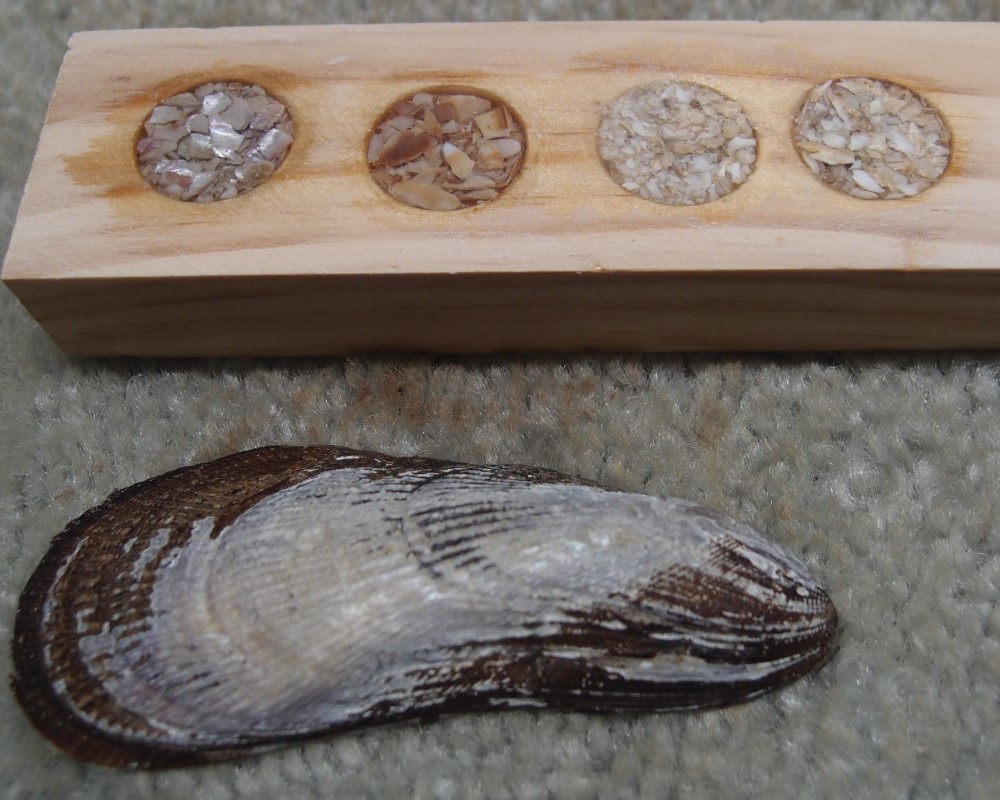
The Ribbed Mussel is a cousin to the edible Blue Mussel. The main difference is that Blue Mussels are found out in the clean ocean, while Ribbed Mussels are found in smelly marshy places. And the ribs. So you wouldn't want to eat a Ribbed Mussel. Actually, I don't care for Blue Mussels either, but back in my diving days I used to collect them because back at the dock you could trade them with the fishing boats for tuna steaks and all kinds of good stuff. Like trading gravel for gold. Blue Mussels form a thick layer over almost anything solid, and the ones I got were much bigger and better than anything I ever saw in the store, where they are also very expensive.
More: Ribbed Mussels ...




